Exploring New York’s Industrial Past in "Cathedrals of Industry"
Join photographer Michael L. Horowitz for a journey through 50 years of photographs!


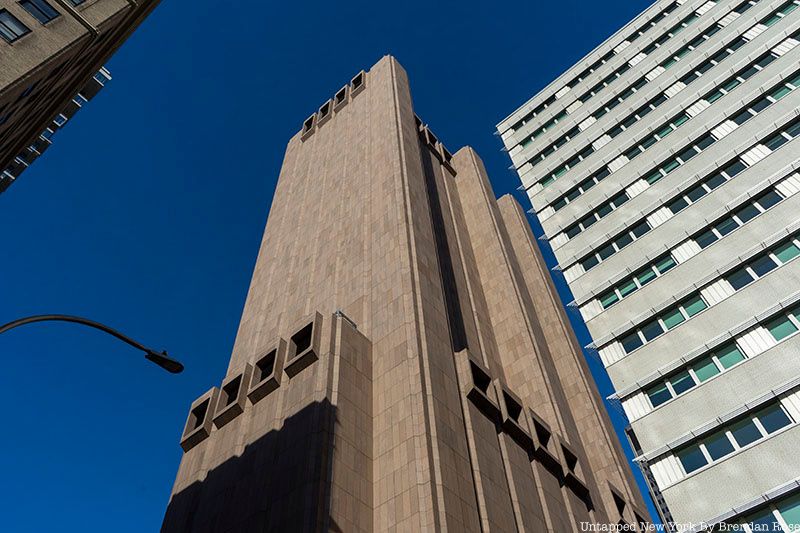
Walking the streets of New York City, passersby might notice that most of the buildings they pass are meant to be inviting: storefronts draw customers in, brownstone stoops welcome neighbors inside, and office building windows allow onlookers to observe thousands hard at work. But mixed into the densely built ecosystem of New York City are buildings that seem out of place. These “monoliths,” with towering concrete and stone walls that have few or no windows are uninviting and almost standoffish. The blank walls of these windowless buildings, though, hide incredible secrets as the diverse and sometimes surprising functions of these buildings often motivate their impenetrable appearance. Uncover the secrets that hide within these ten mysterious and monolithic windowless buildings in New York City.

The Spring Sheet Salt Shed sits out of place among the luxury apartments that line the west side of lower Manhattan. The shed resembles a massive iceberg, its smooth gray concrete slabs meet to form angular points that give it an imposing coolness. The windowless building, completed in 2015, stores massive mounds of road salt totaling 5,000 tons for the city’s sanitation department. In the days before an impending snow storm, a massive garage door at the back of the building opens to reveal the vault where snowplows and trucks source their salt.
Magnified pictures of salt crystals and crumpled paper inspired WXY Architecture + Urban Design and Dattner Architects. The project, lauded by the American Institute of Architects and by the New York Times architecture critic Michael Kimmelman, was originally met with years of public outcry from the shed’s wealthy neighbors. But its placement is part of an effort by the city to create equity in terms of which neighborhoods are forced to house services that the whole city needs. As people explore Hudson Square or walk up and down Hudson River Park they will come across this piece of astounding yet intimidating architecture.

The 550-foot windowless skyscraper standing among the other towers in Tribeca is a telephone exchange building, or wire center, operated by AT&T. Much of New York City phone communications are run through this building, so it is built to withstand nuclear fallout and could stay operational for two weeks after the disaster. One of the city’s most striking brutalist pieces of architecture, the building splits public opinion.
The building was featured in national news coverage in 2016 when The Intercept published an article claiming that 33 Thomas Street served as an NSA surveillance site, code-named TITANPOINTE. Using documents obtained from the NSA whistleblower Edward Snowden, The Intercept claimed the building was a key part of the NSA surveillance program that has targeted the communications of the United Nations, the International Monetary Fund, the World Bank, and at least 38 countries. This information is not confirmed. The building was however a key location in season two and three of the television series Mr. Robot. This building is where all the paper documents of ECorp are being sent and which Elliot (aka Mr. Robot) wants to destroy in one swoop. Another windowless AT&T telephone exchange building is located at 811 10th Avenue between 53rd and 54th streets.
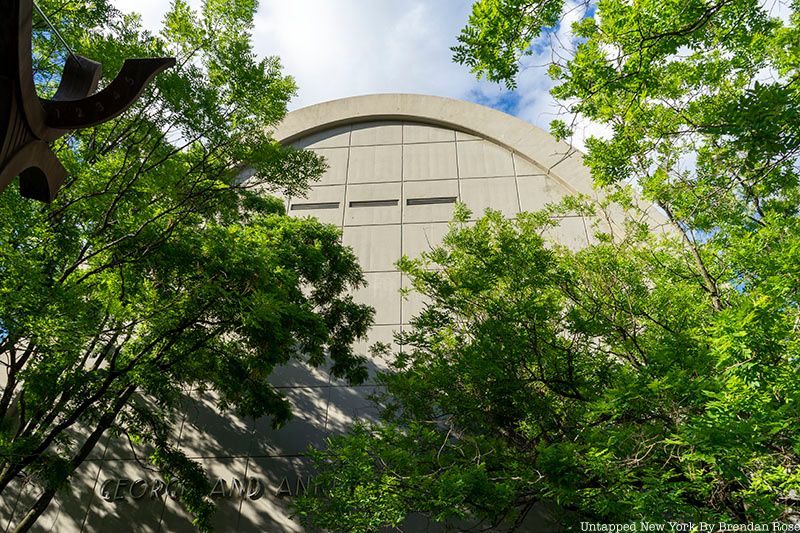
Sitting next to FDR Drive between 90th and 91st street on the Upper East Side is a hulking, arched concrete building. Called Asphalt Green, the striking building is actually an athletic facility with basketball courts and a gym, among other amenities. The recreation center’s name is indicative of what it used to be: an asphalt mixing plant. Architects Ely Jacques Kahn and Robert Allen Jacobs designed the almost windowless building in the 1940s but the need for the mixing plant waned and other uses for the building were proposed. After a proposal for a public recreation center won general opinion, the industrial site was retrofitted with hoops and locker rooms.
Asphalt Green received plenty of criticism: Robert Moses coined the name the “Cathedral of Asphalt” and called it “the most hideous waterfront structure ever inflicted on a city by a combination of architectural conceit and official bad taste.” But the building’s dramatic arches have made it a landmark, and the facility’s popularity is undeniable with thousands of children utilizing the facility for youth sports programs.
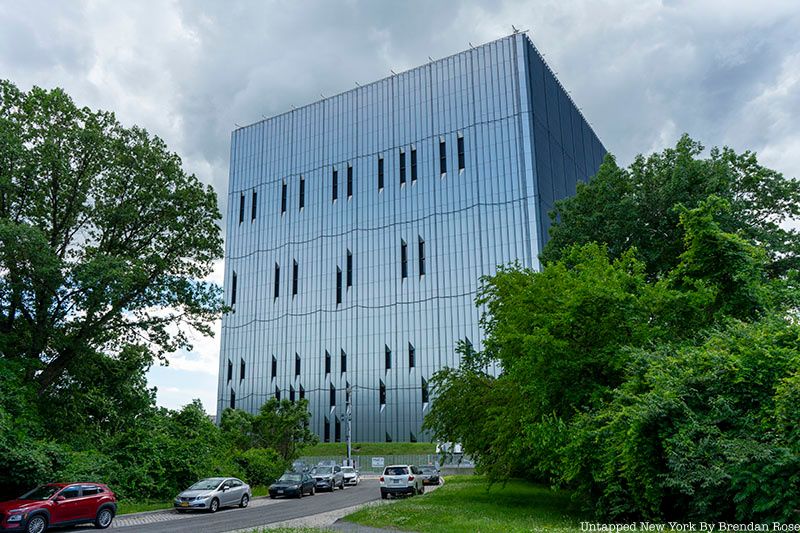
A towering 240 cubic foot silver box overlooks the Hutchinson River Parkway in Pelham Bay in the Bronx. Its aluminum paneled facade creates an optical illusion that makes the building blend into the sky. If you call 911 there is a good chance the person picking up the phone is working in this building as it is the New York Public Safety Answering Center II, or the PSAC II.
Like many of the buildings on this list, the PSAC II is built to withstand worst-case scenarios; the building itself is bomb-proof, weather-proof, and toxic gas-proof. Designed by architects at Skidmore Owings & Merrill and completed in 2016, the building is made of reinforced concrete and protected by a thick metal gate. If it is cut off from the power it will seamlessly transition to generators that are ready to keep the building fully operational for multiple days.

An almost completely blank cube made of granite sits at the base of Manhattan across from Battery Park. Three sculptures that act as crests are affixed to the facade, represting the Triborough Bridge and Tunnel Authority, New York City, and New York State respectively.. The building is part of the ventilation system of the Brooklyn Battery Tunnel.
The windowless box sits stoutly among the iconic towers and landmarks of the tip of Manhattan. The building is featured in Men in Black as the headquarters for the intergalactic agency. As Agent K says to J upon giving the address, “Be there or be square.”

It is hard to miss the massive building that sits at the end of a long thin walkway that juts into the Hudson River just north of Tribeca. The windowless structure resembles a medieval defensive structure, but its true purpose has puzzled New Yorkers for years.
The building is actually an integral part of what occurs almost 100 feet below it: the Holland Tunnel‘s ventilation system, which transports the toxic carbon monoxide exhaust gas out of the tunnel. The tower is one of four vents, two on each side of the river, that house 84 fans—42 blowing and 42 sucking. Each tower is capable of fully refreshing all the air in the tunnel every 90 seconds when turning at full speed.
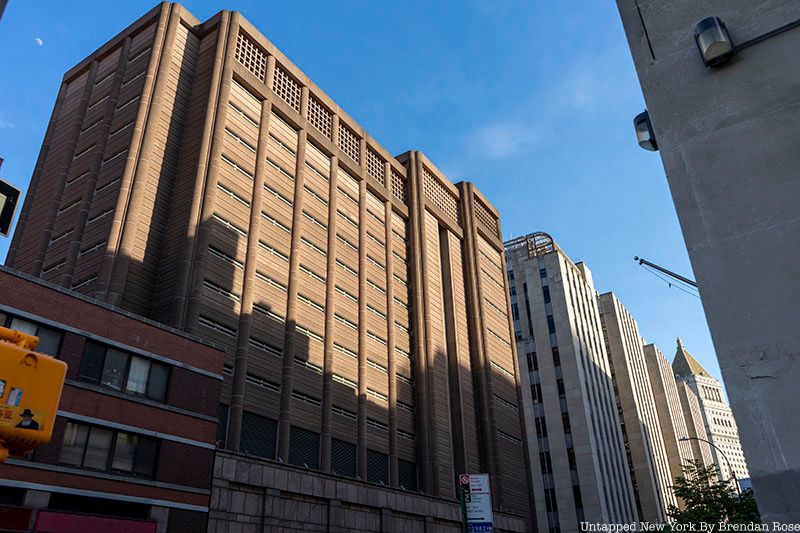
Some windowless buildings are not intentionally designed to be scary and imposing, but the ominousness of the Manhattan Detention Complex is intentional. Many New Yorkers know this building as “The Tombs,” which has become a mainstay in cop dramas set in New York. The complex has appeared on shows like Law and Order and Blue Bloods.
The building is almost windowless apart from thin slits cut into its dark stone facade. The building is the fourth and most recent iteration of Manhattan’s “House of Detention,” a phrase commonly associated with detention centers in the city. In 2020, the facility announced it would close as part of a larger push to move the city’s prison population into safer and more modern facilities.
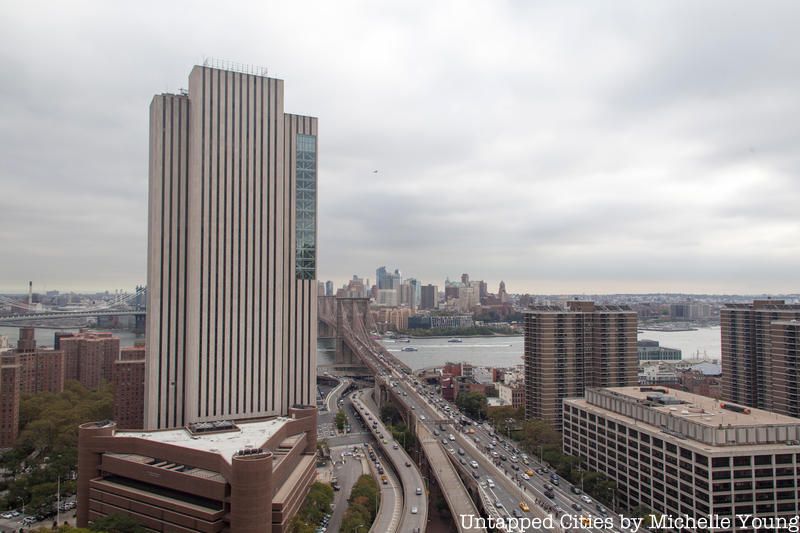
When looking at the New York City skyline from Brooklyn, a building one’s catches attention at the foot of the Brooklyn Bridge. The windows at 375 Pearl Street are not original and up until 2016, the building was almost completely windowless. Previously, the building was a phone line switching center operated by Verizon and had no need for windows because the building’s main purpose was to house technical equipment. But that changed after the building was sold to new owners who wanted to convert the building into housing offices and a data center instead.
After receiving a new facade with a glass curtain wall, the building now houses a number of private companies and city agencies including the NYPD, the Human Resources Administration, the Department of Finance, and the Department of Sanitation. Mayor Eric Adams and Phil Banks, his deputy mayor for public safety, reportedly have secret offices within the building as well. As a mayor who is known to seek privacy, Adams can work without contact with City Council members or reporters in this secure, windowless building.
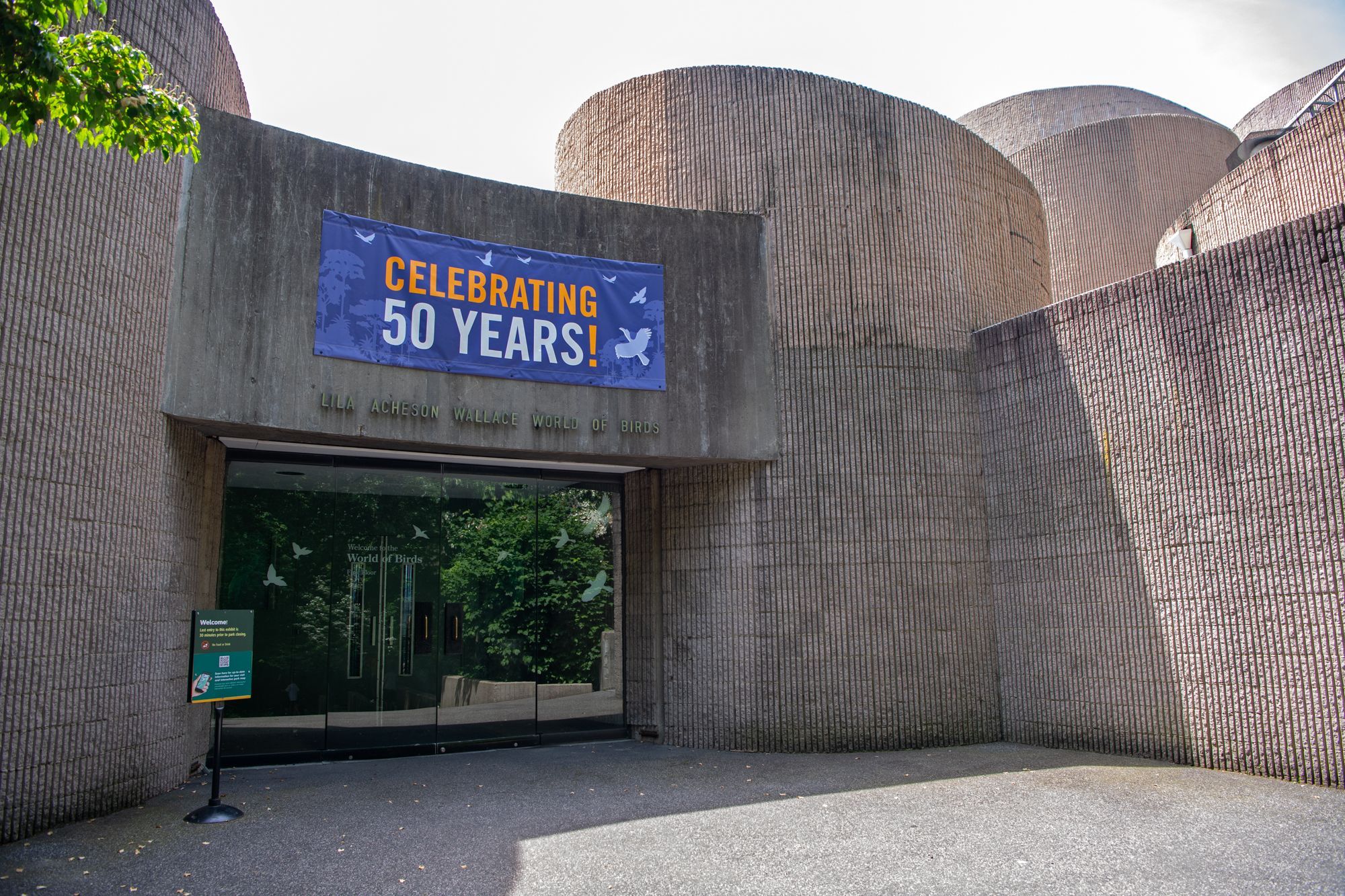
Tucked into a wooded area on the ground of the Bronx Zoo is the zoo’s tropical bird enclosure called the World of Birds. The building has few windows so that it can create a believable artificial environment for the different tropical birds and monkeys inside.
Beautiful colorful cranes, toucans, and birds of paradise are free to fly around several walk-through aviaries that mimic a tropical jungle environment within the building. Similar to Asphalt Green, the World of Birds building at The Bronx Zoo hides a vibrant interior within a bleak exterior.

A building can be designed with no windows for a host of reasons but the massive marble-columned structure in Riverside Park is different than every building on this list: it is a tomb. Ulysses S. Grant, former President and General of the Union Army, is honored in this massive columned edifice.
The mausoleum‘s design is inspired by the ancient Greek Mausoleum of Halicarnassus and Napoleon’s tomb at Les Invalides in Paris. Though the famous riddle goes “Who is buried in Grant’s Tomb?” it a trick question. Grant’s sarcophagus sits above ground within the tomb, so he is not buried. The tomb, which is the largest mausoleum in the United States, is open to the public and offers free admission.
Next, check out 7 New York City skyscrapers taller than the Empire State Building!
Subscribe to our newsletter